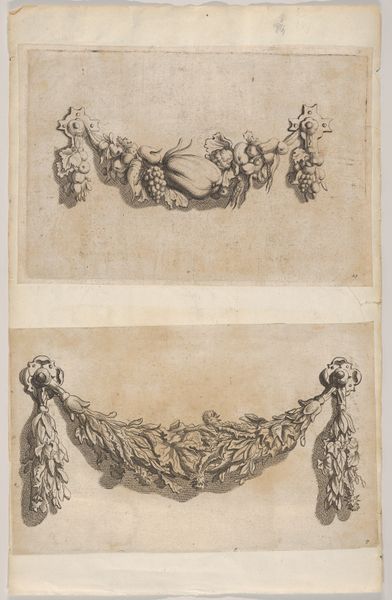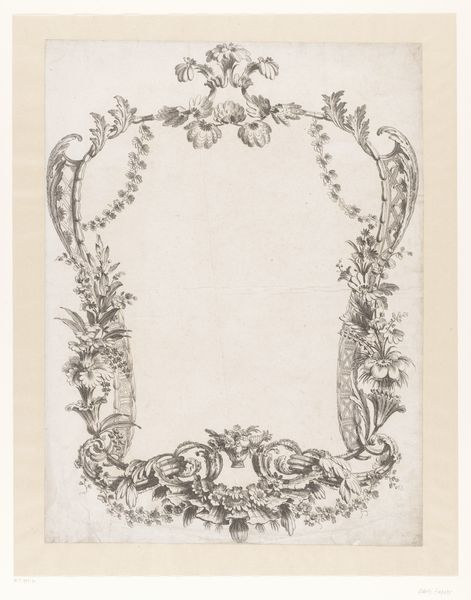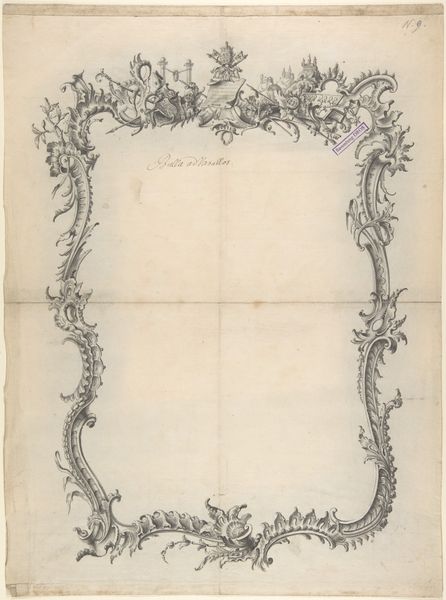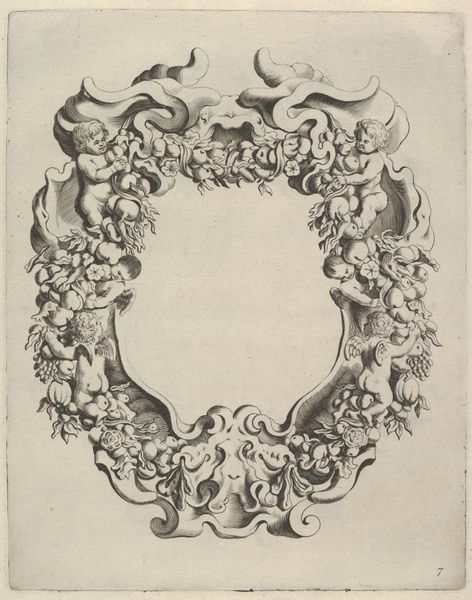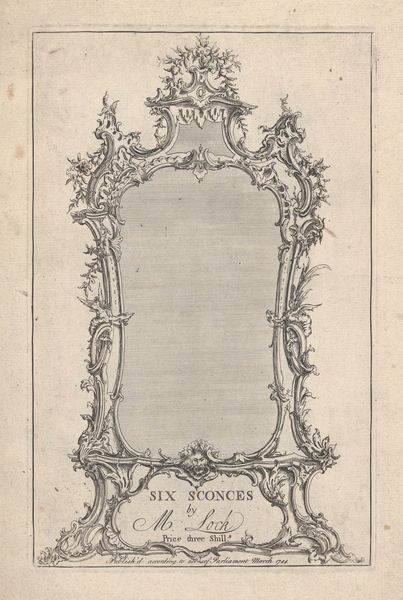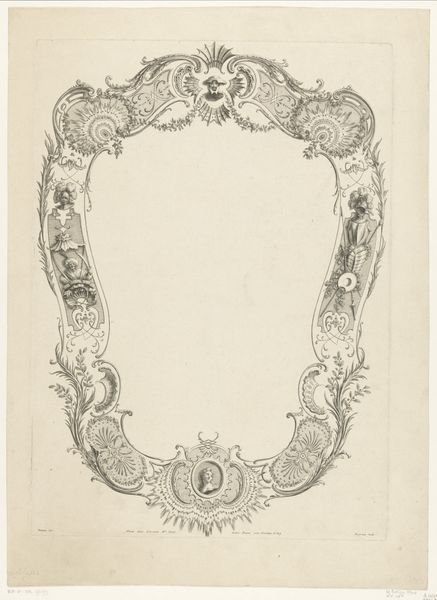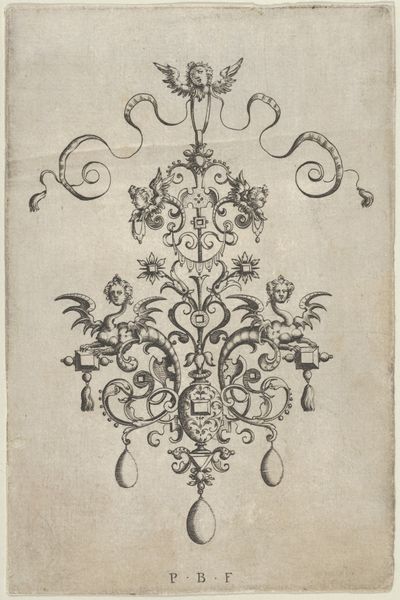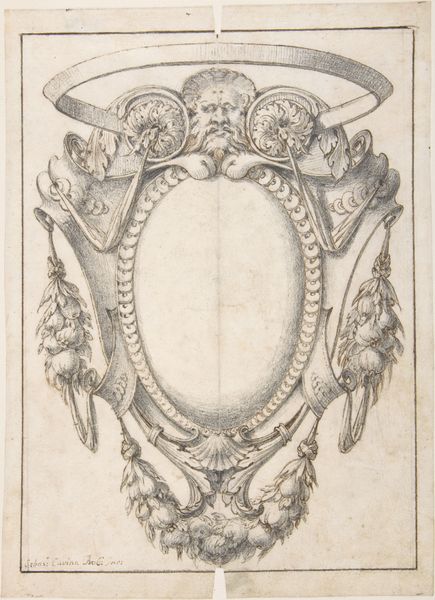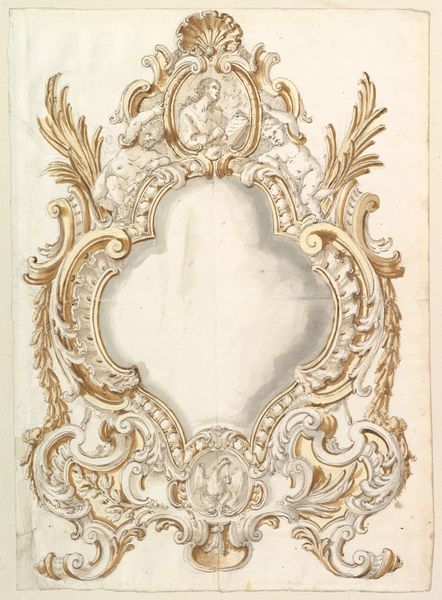
drawing, print, etching, paper
#
drawing
# print
#
etching
#
etching
#
paper
#
form
#
line
#
decorative-art
Dimensions: 745 × 564 mm (image); plate not visible; 760 × 587 mm (sheet)
Copyright: Public Domain
Gabriel Huquier created this ornamental border using graphite in France sometime around the 1700s. It exemplifies the Rococo style, with its elaborate, curvilinear forms and naturalistic motifs. The image would have served as a template for craftsmen decorating buildings, furniture, and other luxury items. During this period, institutions like the Académie Royale de Peinture et de Sculpture codified artistic standards and promoted the idea of French taste as a marker of refinement and social status. Ornament became a visual language through which elites asserted their power. Looking closely, we can see how the border combines classical elements like acanthus leaves with more whimsical floral arrangements. This fusion reflects the Rococo's departure from the strict rules of earlier styles, but without challenging the social hierarchy. By studying decorative prints like this one, along with archival sources on design practices and the luxury trades, we can gain a richer understanding of the relationship between art, craft, and social life in 18th-century France.
Comments
No comments
Be the first to comment and join the conversation on the ultimate creative platform.
